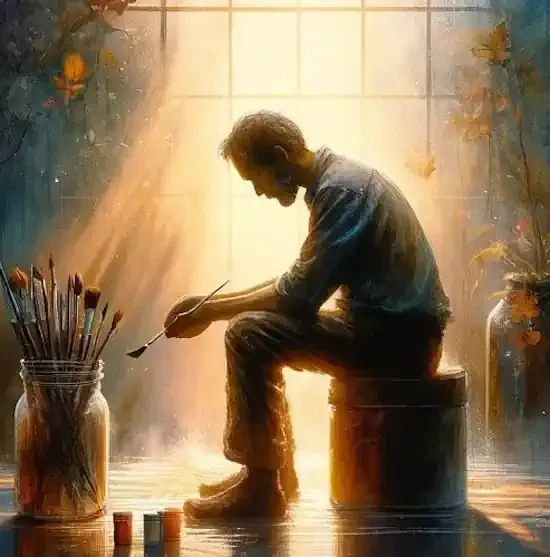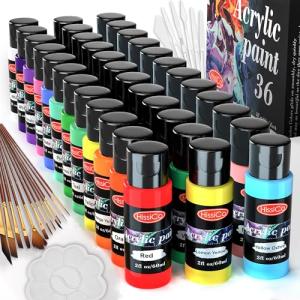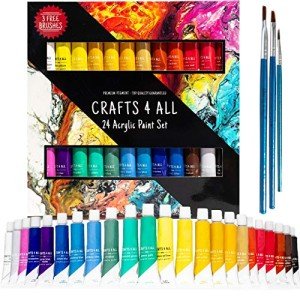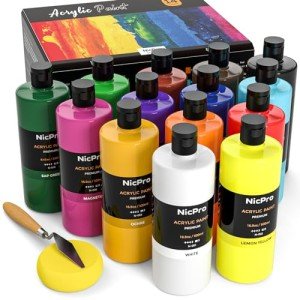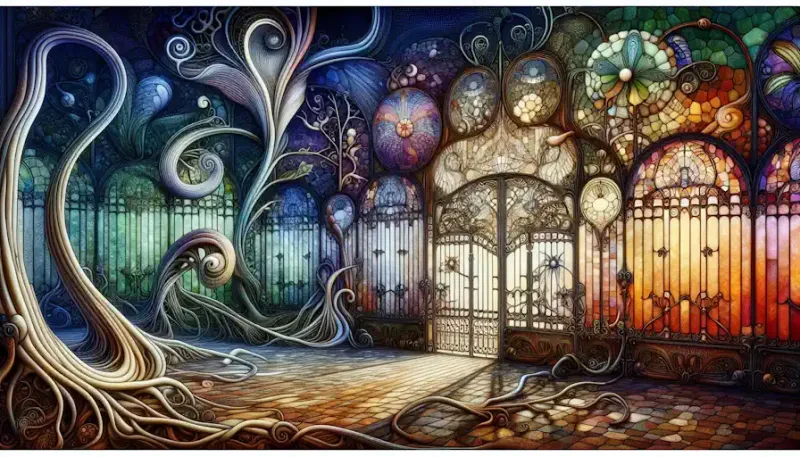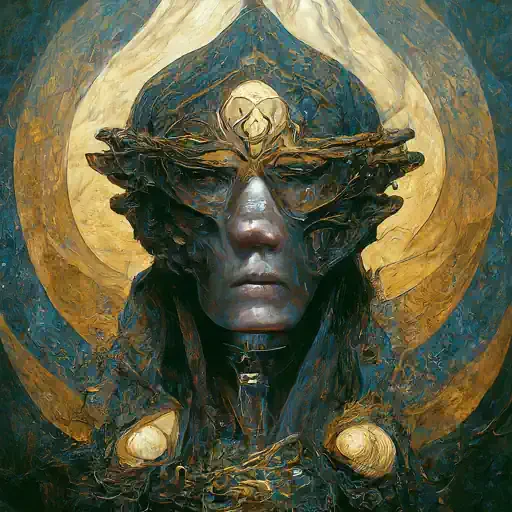Introduction
Art has long been recognized as a powerful tool for expression, communication, and exploration of the human experience. Beyond its aesthetic value, art holds a profound ability to heal, offering solace, insight, and transformation to those who engage with it. This article delves into the dynamic relationship between art and healing, focusing specifically on the practice of art therapy.
At its core, art therapy harnesses the innate therapeutic potential of artistic expression to promote psychological, emotional, and even physical well-being. Through a variety of creative mediums and guided processes, individuals can explore their thoughts, emotions, and experiences in a safe and supportive environment.
This article provides a brief overview of art therapy, tracing its historical roots, explaining its fundamental principles, and highlighting its myriad benefits. By shedding light on the profound impact of art therapy, this article aims to foster understanding, appreciation, and accessibility to this transformative healing modality. Through exploration and discussion, we aim to illuminate the profound ways in which art can serve as a catalyst for healing and personal growth.
History of Art Therapy
Origins and Pioneers
The roots of art therapy can be traced back to the early 20th century, where psychiatrists and psychologists began to recognize the therapeutic potential of artistic expression. One of the earliest pioneers in the field was psychiatrist Dr. Adrian Hill, who used art as a therapeutic tool with patients in British sanatoriums during the 1940s. Hill observed the healing power of art in relieving emotional distress and facilitating communication beyond verbal language.
Evolution Over Time
The field of art therapy continued to evolve throughout the 20th century, gaining recognition and acceptance within psychology and healthcare communities. The publication of Margaret Naumburg's seminal work, "Dynamically Oriented Art Therapy," in 1950 further solidified the theoretical foundations of art therapy, emphasizing the importance of symbolism and unconscious expression in the artistic process.
In the 1960s and 1970s, art therapy gained momentum as an established profession with the formation of professional organizations such as the American Art Therapy Association (AATA) and the British Association of Art Therapists (BAAT). These organizations set standards for education, training, and ethical practice, helping to legitimize art therapy as a distinct therapeutic discipline.
Recognition in Psychology and Healthcare
Over the decades, art therapy has gained recognition as a valuable adjunctive therapy in various psychological and healthcare settings. Research studies have demonstrated its efficacy in treating a wide range of mental health conditions, including depression, anxiety, trauma, and substance abuse disorders. As a result, art therapy has become integrated into clinical practice in hospitals, mental health clinics, schools, and community settings worldwide.
Moreover, art therapy has expanded beyond traditional psychotherapeutic settings to encompass diverse populations and contexts. It is used with children, adolescents, adults, and older adults, as well as individuals with developmental disabilities, veterans with post-traumatic stress disorder (PTSD), and survivors of natural disasters or conflicts.
Today, art therapy continues to grow and adapt to meet the evolving needs of individuals and communities, embracing new technologies, cultural perspectives, and interdisciplinary collaborations. Its recognition within psychology and healthcare underscores the enduring significance of art as a powerful tool for healing, self-discovery, and personal transformation.
Understanding Art Therapy
Definition and Principles
Art therapy is a form of psychotherapy that utilizes the creative process of making art to improve and enhance mental health and well-being. It operates on the principle that artistic expression can tap into the unconscious mind, allowing individuals to explore and process emotions, thoughts, and experiences that may be difficult to articulate verbally.
Central to the practice of art therapy is the belief in the inherent healing power of art-making. Through engaging in artistic activities such as drawing, painting, sculpting, or collage, individuals can access deeper layers of consciousness, gain insight into their inner world, and develop new coping strategies for managing emotional challenges.
Different Modalities and Approaches
Art therapy encompasses a wide range of modalities and approaches, each tailored to meet the unique needs and preferences of clients. Some common modalities include:
Visual Art Therapy: This involves the use of drawing, painting, and other visual arts to explore emotions, memories, and inner conflicts. Clients may create artwork spontaneously or in response to specific prompts or themes.
Sculpture and Three-Dimensional Art Therapy: Sculpting with clay, modeling with found objects, or creating three-dimensional artworks can provide a tactile and embodied experience of self-expression and transformation.
Music and Dance/Movement Therapy: These modalities involve using music, rhythm, and movement as vehicles for emotional expression, communication, and self-discovery. Clients may engage in improvisational dance, drumming, or other expressive movement activities.
Narrative and Storytelling Therapy: This approach focuses on creating narratives or stories through writing, storytelling, or visual storytelling techniques. It allows individuals to externalize their experiences, gain perspective, and re-author their life stories.
How Art Therapy Works on Psychological and Emotional Levels
Art therapy operates on multiple psychological and emotional levels to promote healing and growth:
Nonverbal Expression: Art-making provides a nonverbal means of expression, allowing individuals to communicate thoughts, feelings, and experiences that may be difficult to articulate verbally. This can be especially beneficial for individuals who struggle with verbal communication or have experienced trauma.
Symbolism and Metaphor: Artwork often contains symbolic imagery or metaphors that reflect unconscious thoughts, emotions, and conflicts. Through the process of creating and interpreting art, individuals can gain insight into underlying psychological dynamics and patterns.
Catharsis and Emotional Release: Engaging in art-making can facilitate emotional catharsis and release, allowing individuals to express and process intense emotions in a safe and contained manner. This can lead to a sense of relief, clarity, and emotional integration.
Self-Reflection and Insight: Art therapy encourages self-reflection and introspection, prompting individuals to explore their inner world and gain insight into their thoughts, feelings, and behaviors. This process of self-discovery can foster greater self-awareness, self-compassion, and personal growth.
Overall, art therapy offers a holistic and integrative approach to healing, addressing the interconnectedness of mind, body, and spirit. By harnessing the transformative power of creativity, art therapy empowers individuals to tap into their innate resilience, creativity, and capacity for self-expression, ultimately facilitating their journey towards healing and wholeness.
Benefits of Art Therapy
Art therapy offers a wide range of benefits across mental, emotional, and physical dimensions, making it a versatile and effective therapeutic modality.
Mental Health Benefits
Stress Reduction: Engaging in artistic activities can promote relaxation and reduce levels of stress hormones such as cortisol. The process of creating art provides a calming and meditative experience, allowing individuals to unwind and find respite from daily pressures.
Anxiety and Depression Management: Art therapy has been shown to alleviate symptoms of anxiety and depression by providing a creative outlet for expressing and processing difficult emotions. Through art-making, individuals can externalize their inner struggles, gain perspective, and develop healthier coping mechanisms.
Trauma Processing: Art therapy can facilitate the healing of trauma by providing a safe and supportive space for individuals to explore and process traumatic memories. Art-making allows for the expression of complex emotions and experiences that may be too overwhelming to verbalize, enabling individuals to integrate and make meaning of their trauma.
Emotional Wellbeing
Self-Expression and Self-Awareness: Art therapy encourages self-expression and introspection, enabling individuals to express themselves authentically and explore their inner world. Through the creative process, individuals can gain insight into their emotions, beliefs, and values, fostering greater self-awareness and personal growth.
Healing Through Creativity: Engaging in artistic activities can promote emotional healing and catharsis, providing a means of release for pent-up emotions and unresolved conflicts. Art-making allows individuals to tap into their innate creativity and resourcefulness, empowering them to navigate life's challenges with resilience and grace.
Building Resilience: Art therapy fosters resilience by promoting adaptive coping strategies and strengthening individuals' capacity to bounce back from adversity. Through creative problem-solving and self-expression, individuals can develop greater emotional resilience and flexibility, enabling them to cope more effectively with life's ups and downs.
Physical Health Improvements
Pain Management: Art therapy has been shown to reduce perceptions of pain and discomfort by diverting attention away from physical symptoms and promoting relaxation. Engaging in creative activities can stimulate the release of endorphins, the body's natural painkillers, leading to feelings of comfort and well-being.
Coping with Chronic Illnesses: Art therapy can enhance coping skills and improve quality of life for individuals living with chronic illnesses such as cancer, autoimmune disorders, or chronic pain conditions. Through art-making, individuals can find a sense of purpose, agency, and connection amidst the challenges of illness, fostering a greater sense of well-being and empowerment.
Enhancing Overall Well-Being: Art therapy promotes holistic well-being by addressing the interconnectedness of mind, body, and spirit. By nurturing creativity, self-expression, and emotional resilience, art therapy supports individuals in living more fulfilling, balanced, and meaningful lives, regardless of their health status or circumstances.
Case Studies and Personal Testimonials
Real-life Examples of Individuals Benefiting from Art Therapy
Sarah's Story: Sarah, a survivor of domestic violence, struggled with feelings of fear, shame, and low self-esteem. Through art therapy sessions, she found a safe space to express her emotions through painting and collage. Over time, Sarah discovered a sense of empowerment and resilience as she explored themes of healing and transformation in her artwork. Art therapy provided Sarah with a powerful means of reclaiming her voice and rebuilding her sense of self-worth.
Jake's Journey: Jake, a military veteran diagnosed with PTSD, experienced intense flashbacks and nightmares related to his traumatic experiences in combat. Through art therapy, Jake found relief from his symptoms as he used drawing and sculpture to process his memories and emotions. Art therapy provided Jake with a tangible outlet for releasing pent-up tension and reconnecting with his inner strength. Over time, Jake gained a sense of control and mastery over his trauma, allowing him to reclaim his life and pursue his goals with renewed purpose.
Testimonials from Therapists and Participants
"Art therapy has been a transformative journey for many of my clients, offering them a unique pathway to healing and self-discovery. Through the process of creating art, individuals often uncover insights and emotions that may have been buried or overlooked. Witnessing their growth and resilience is incredibly rewarding as a therapist." - Emily, Licensed Art Therapist
"As a participant in art therapy sessions, I have found a sense of liberation and empowerment in expressing myself creatively. Art has allowed me to explore aspects of my identity and experience that I may not have been able to articulate verbally. Through art therapy, I have gained a deeper understanding of myself and my journey towards healing." - Mark, Art Therapy Participant
"Art therapy has been a lifeline for me during my battle with chronic illness. Through painting and journaling, I have found moments of peace and joy amidst the pain and uncertainty. Art therapy has helped me reconnect with my inner strength and resilience, reminding me that I am more than my illness." - Rachel, Chronic Illness Survivor
These case studies and testimonials highlight the profound impact of art therapy on individuals' lives, demonstrating its ability to promote healing, resilience, and self-discovery across diverse populations and contexts. Through creativity and connection, art therapy offers hope and healing to those in need, empowering them to navigate life's challenges with courage and grace.
Art Therapy Techniques and Practices
Drawing and Painting:
Drawing and painting are among the most commonly used techniques in art therapy. Participants use various drawing and painting materials, such as pencils, pastels, watercolors, and acrylics, to create visual representations of their thoughts, emotions, and experiences. These mediums offer a versatile means of expression, allowing individuals to explore themes of identity, memory, and emotion through color, form, and symbolism. Art therapists may provide prompts or themes to guide the artistic process or allow participants to create spontaneously based on their inner impulses and intuition.
Sculpting and Modeling:
Sculpting and modeling involve shaping and manipulating three-dimensional materials, such as clay, wire, or found objects, to create sculptures or other tactile artworks. This hands-on approach to art-making provides a sensory-rich experience that can promote embodied self-expression and exploration. Sculpting allows individuals to engage with materials in a direct and visceral way, fostering a deeper connection to their emotions and physical sensations. Through sculpting and modeling, participants can externalize their inner world, symbolize their experiences, and explore themes of transformation and resilience.
Music and Dance Therapy:
Music and dance therapy utilize the therapeutic properties of sound, rhythm, and movement to facilitate emotional expression, communication, and healing. Participants may engage in activities such as improvisational music-making, songwriting, or guided movement exercises to explore their feelings and experiences. Music and dance therapy can help individuals regulate their emotions, reduce anxiety, and enhance self-awareness through the embodied experience of rhythm and movement. These modalities offer a nonverbal means of communication and connection, allowing participants to express themselves authentically and connect with others in a supportive and creative environment.
Mindfulness-Based Approaches:
Mindfulness-based approaches integrate principles of mindfulness meditation with artistic practices to promote present-moment awareness, self-compassion, and stress reduction. Participants may engage in mindfulness exercises such as deep breathing, body scanning, or guided visualization to cultivate inner calm and focus. These mindfulness techniques are often combined with art-making processes, such as mindful drawing or painting, to enhance self-awareness and emotional regulation. Mindfulness-based art therapy encourages individuals to engage with their artwork in a nonjudgmental and compassionate manner, fostering acceptance and appreciation of their inner experiences.
These art therapy techniques and practices offer diverse pathways for individuals to explore their thoughts, emotions, and experiences, facilitating healing, self-discovery, and personal growth. Whether through drawing and painting, sculpting and modeling, music and dance therapy, or mindfulness-based approaches, art therapy empowers individuals to tap into their innate creativity and resilience, ultimately fostering greater well-being and wholeness.
Art Therapy in Different Settings
Clinical Settings:
In clinical settings, such as hospitals, mental health clinics, and private practices, art therapy is integrated into treatment plans for individuals with a wide range of mental health concerns and medical conditions. Licensed art therapists work closely with clients to address issues such as anxiety, depression, trauma, addiction, eating disorders, and chronic pain. Art therapy sessions may be conducted in individual or group settings, offering clients a safe and supportive environment to explore their emotions, develop coping skills, and work towards therapeutic goals. Clinical art therapy often involves collaboration with other healthcare professionals, including psychiatrists, psychologists, social workers, and occupational therapists, to provide comprehensive and holistic care.
Schools and Educational Institutions:
Art therapy is increasingly recognized as a valuable resource for promoting social-emotional development, creativity, and resilience in students of all ages. In schools and educational institutions, art therapists collaborate with teachers, counselors, and administrators to integrate art therapy into the curriculum and provide support for students facing academic, behavioral, or emotional challenges. Art therapy interventions may be tailored to address specific issues such as bullying, peer relationships, grief and loss, learning disabilities, or trauma. Through group art activities, individual counseling sessions, and classroom interventions, art therapy helps students build self-esteem, enhance communication skills, and cultivate emotional intelligence.
Community Centers and Outreach Programs:
Art therapy programs in community centers and outreach programs serve diverse populations, including underserved communities, marginalized groups, and individuals facing socioeconomic barriers to healthcare. These programs offer accessible and culturally responsive art therapy services to individuals of all ages and backgrounds, promoting healing, empowerment, and social connection. Art therapy may be offered in community-based settings such as shelters, community centers, homeless shelters, refugee camps, or disaster relief sites, providing individuals with a creative outlet for self-expression and resilience-building. Community-based art therapy programs often emphasize strengths-based approaches, community engagement, and collaborative art-making projects that foster a sense of belonging and collective healing.
Prisons and Rehabilitation Centers:
In prisons and rehabilitation centers, art therapy offers incarcerated individuals opportunities for self-reflection, personal growth, and rehabilitation. Art therapy programs in correctional facilities provide inmates with a constructive and therapeutic outlet for processing their experiences, addressing substance abuse issues, and developing pro-social skills. Through art-making, individuals can explore themes of identity, redemption, and transformation, gaining insight into the factors contributing to their criminal behavior and working towards positive change. Art therapy in prisons may be offered in group settings, individual counseling sessions, or as part of reentry programs to support individuals' transition back into the community.
Art therapy in different settings reflects the versatility and adaptability of this therapeutic modality, which can be tailored to meet the unique needs and contexts of diverse populations. Whether in clinical settings, schools, community centers, or correctional facilities, art therapy offers individuals a powerful means of self-expression, healing, and personal growth, fostering resilience and well-being across varied environments and life circumstances.
Challenges and Considerations
Access and Affordability:
One of the primary challenges in the field of art therapy is ensuring equitable access to services for individuals from diverse socioeconomic backgrounds. Art therapy sessions can be costly, particularly in private practice settings, making them inaccessible to those who cannot afford private therapy fees or lack insurance coverage. Moreover, limited availability of art therapists in certain geographic areas or underserved communities further exacerbates disparities in access to care. Addressing barriers to access and affordability requires advocacy for increased funding, reimbursement, and resources for art therapy services, as well as the development of community-based and low-cost options for those in need.
Cultural Considerations:
Cultural competence and sensitivity are essential considerations in art therapy practice, as cultural factors can significantly influence individuals' beliefs, values, and perceptions of mental health and healing. Art therapists must be mindful of cultural differences in artistic expression, communication styles, and therapeutic preferences when working with clients from diverse cultural backgrounds. Respect for cultural traditions, beliefs, and norms is paramount in ensuring that art therapy interventions are culturally relevant, respectful, and effective. Culturally responsive training and supervision are essential for art therapists to navigate complex cultural dynamics and provide inclusive and culturally competent care to all clients.
Integration with Traditional Therapies:
Art therapy often operates within interdisciplinary contexts, collaborating with other mental health professionals and treatment modalities to provide comprehensive care for clients. Integrating art therapy with traditional therapies, such as psychotherapy, counseling, medication management, and occupational therapy, can enhance treatment outcomes and address clients' multifaceted needs. However, challenges may arise in coordinating care, communicating with other professionals, and ensuring continuity of treatment across different modalities. Art therapists must advocate for the value of art therapy within multidisciplinary teams and foster collaboration with other professionals to promote holistic and integrated approaches to mental health care.
Ethical Concerns:
Art therapists are bound by ethical guidelines and standards of practice that govern their professional conduct, confidentiality, and duty of care towards clients. Ethical considerations may arise in areas such as informed consent, boundaries, dual relationships, confidentiality, and client autonomy. Art therapists must navigate complex ethical dilemmas, particularly when working with vulnerable populations, minors, or individuals with impaired decision-making capacity. Maintaining ethical integrity requires ongoing supervision, consultation, and adherence to ethical codes of conduct established by professional organizations such as the American Art Therapy Association (AATA) or the British Association of Art Therapists (BAAT). Art therapists must prioritize the well-being and rights of their clients while upholding the highest ethical standards in their practice.
Addressing challenges and considerations in art therapy requires a multifaceted approach that encompasses advocacy, education, cultural competence, interdisciplinary collaboration, and ethical reflection. By addressing barriers to access, promoting cultural humility, integrating with traditional therapies, and upholding ethical principles, art therapists can enhance the effectiveness, inclusivity, and ethical integrity of their practice, ultimately advancing the field of art therapy and improving outcomes for clients.
Future Directions and Possibilities
Research Advancements:
As the field of art therapy continues to evolve, there is a growing emphasis on evidence-based practice and research to support the efficacy and effectiveness of art therapy interventions. Future research endeavors may focus on conducting rigorous clinical trials, longitudinal studies, and meta-analyses to further validate the therapeutic benefits of art therapy across diverse populations and settings. Additionally, research may explore the mechanisms underlying art therapy's therapeutic effects, including neurobiological, psychological, and socio-cultural factors. Advancements in research methodologies and interdisciplinary collaborations will contribute to a deeper understanding of how art therapy promotes healing, resilience, and well-being.
Technology and Virtual Art Therapy:
The emergence of digital technologies offers exciting possibilities for expanding the reach and accessibility of art therapy through virtual platforms and telehealth services. Virtual art therapy sessions can provide individuals with greater flexibility, convenience, and privacy in accessing therapeutic support from the comfort of their own homes. Technology-enabled art therapy interventions may incorporate digital art-making tools, online support groups, interactive apps, and virtual reality environments to facilitate creative expression, communication, and connection. However, challenges such as digital divide, internet connectivity issues, and privacy concerns must be addressed to ensure equitable access and quality of care in virtual art therapy settings.
Advocacy and Awareness Efforts:
Advocacy and awareness efforts play a crucial role in promoting the recognition, accessibility, and integration of art therapy within healthcare systems, educational institutions, and community settings. Art therapists, professional organizations, and advocacy groups can engage in advocacy initiatives to raise public awareness, educate policymakers, and advocate for policy changes that support the inclusion of art therapy in healthcare legislation, funding, and licensure requirements. Increasing public awareness of the benefits of art therapy through media campaigns, community events, and educational outreach can also help reduce stigma, expand access to services, and foster greater appreciation for the transformative power of art in healing and wellness.
In summary, the future of art therapy holds exciting possibilities for research advancements, technological innovations, and advocacy efforts that will contribute to the continued growth and evolution of the field. By embracing emerging technologies, conducting rigorous research, and advocating for greater recognition and accessibility, art therapists can empower individuals to harness the healing potential of art for personal growth, resilience, and well-being in the years to come.
Art Therapy
Art therapy stands at the intersection of creativity and healing, offering a profound pathway for individuals to explore, express, and transform their inner experiences. Throughout this article, we have explored the multifaceted benefits of art therapy across mental, emotional, and physical dimensions, witnessing its power to promote self-expression, resilience, and well-being.
Recap of the Healing Potential of Art Therapy:
Art therapy harnesses the innate therapeutic potential of artistic expression to facilitate healing, growth, and self-discovery. Through drawing, painting, sculpting, and other creative modalities, individuals can tap into their inner resources, process emotions, and develop new insights and coping skills. Art therapy offers a holistic approach to healing, addressing the interconnectedness of mind, body, and spirit, and empowering individuals to navigate life's challenges with creativity and resilience.
Call to Action for Further Exploration and Integration:
As we look to the future, there is a pressing need for further exploration and integration of art therapy into mainstream healthcare, education, and community settings. Art therapists, policymakers, educators, and advocates must work collaboratively to expand access to art therapy services, promote awareness of its benefits, and advocate for policy changes that support its inclusion in healthcare systems. By embracing emerging technologies, conducting rigorous research, and fostering interdisciplinary collaborations, we can unlock the full potential of art therapy to enhance human well-being and foster a more compassionate and inclusive society.
Hope for a Future where Art Therapy is More Widely Accessible and Understood:
In envisioning the future, we hold hope for a world where art therapy is more widely accessible and understood, where individuals from all walks of life can access the healing power of art to navigate life's challenges, foster resilience, and cultivate inner well-being. By recognizing and valuing the transformative potential of art in healing and self-discovery, we can create a future where art therapy is integrated into healthcare, education, and community settings as a fundamental component of holistic care and wellness.
In conclusion, let us continue to champion the transformative power of art therapy, advocating for its recognition, accessibility, and integration in service of promoting healing, resilience, and human flourishing for all. Together, we can create a future where creativity is celebrated as a fundamental aspect of human well-being, and art therapy serves as a beacon of hope and healing for generations to come.
